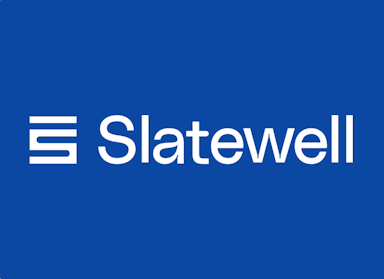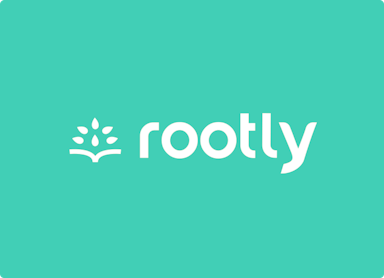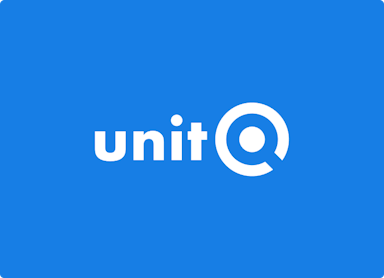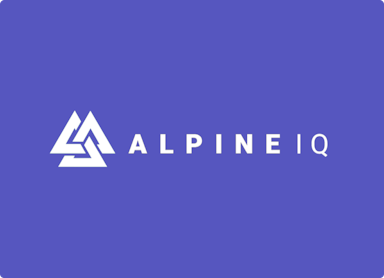
The Competitive Advantage of Compliance: 9 Reasons to Prioritize Data Security and Privacy
Anna Fitzgerald
Senior Content Marketing Manager
Emily Bonnie
Senior Content Marketing Manager
In the rapidly evolving digital landscape, data security and privacy have become paramount concerns for businesses and consumers alike.
As cyber threats become more sophisticated and the regulatory environment becomes stricter, organizations must demonstrate their commitment to safeguarding sensitive information.
Compliance with established data security and privacy frameworks such as SOC 2®, ISO 27001, and NIST 800-53 not only ensures robust security measures but also offers a competitive advantage.
Let’s take a closer look at the top reasons why organizations pursue compliance.

1. To close deals with new clients
In 2023, 29% of organizations lost a new business deal because they were missing a compliance certification, and 72% of businesses completed a compliance audit specifically to win new business — an increase from 63% in 2022.
In fact, the driving force behind the compliance program for most organizations is to increase revenue/win new clients (23%). For large companies with over $1 billion in revenue, the percentage is even higher at 34%.
This was the case for CampTek, a full-life-cycle RPA SaaS provider. As they started to move upmarket towards larger enterprise customers in the fintech and healthcare space, these clients were alluding or explicitly stating that CampTek had to be SOC 2 compliant before they would sign a deal with them. After getting SOC 2 compliant with Secureframe, they were able to accelerate and close multiple enterprise deals with multi-billion dollar organizations, including a $4.2 billion partner.
Recommended reading

Read how CampTek was able to close multiple enterprise deals that were contingent on receiving a SOC 2 Type I report
2. To accelerate the sales cycle
Having a compliance certification or report can also significantly accelerate the sales cycle by providing potential customers with immediate assurance that a company meets rigorous data security and privacy standards.
This transparency reduces the need for lengthy due diligence, as customers can quickly verify that the company has the necessary controls in place to protect their data. It streamlines the decision-making process, allowing sales teams to move prospects through the pipeline more efficiently.
Slatewell, for example, is a modern, integrated software platform for trust and estate lawyers. When their sales cycle was getting bogged down by long IT checklists and follow-up security questions, Slatewell partnered with Secureframe to get SOC 2 compliant. They got their SOC 2 Type II report in less than five weeks and immediately saw an impact with prospects.
Usually we have to have a follow up meeting with the CSO, especially with enterprise customers, but with Secureframe we can already see a two- to three-week cutdown in sales cycles." —Imran Brown, Founder & CTO, Slatewell
Recommended reading

Read how Slatewell was able to accelerate its sales cycle by 2-3 weeks after getting SOC 2 compliant
3. To differentiate from non-compliant competitors
In a competitive market, demonstrating a commitment to data security and privacy can set an organization apart from its competitors. Many clients, particularly those in regulated industries such as finance and healthcare, prefer to work with vendors who have achieved compliance with recognized standards.
By showcasing compliance, organizations can differentiate themselves and attract new business.
This was the case for the incident management platform Rootly. As a young company, Rootly achieving SOC 2 compliance not only unblocked multiple enterprise deals — it also gave them a huge competitive advantage against larger competitors who weren’t SOC 2 compliant.
Having the SOC 2 report in hand lends us a lot of credibility. I know a lot of larger companies in our space that are nowhere close to SOC 2 ready. It’s given us a huge competitive edge.” — JJ Tang, Co-Founder, Rootly
Recommended reading

Learn how Rootly got SOC 2 ready in just two weeks
4. To build trust with customers and partners
Trust is a cornerstone of any successful business relationship. Customers as well as partners need assurance that their data is safe and that the organization is taking all necessary steps to protect it.
Achieving compliance with recognized standards like SOC 2, ISO 27001, and PCI DSS signals to the market that your organization adheres to the highest levels of data security and privacy. This trust can lead to stronger client relationships, higher customer retention rates, and an enhanced reputation.
This was the primary reason that Inflectra kicked off its compliance journey. As an organization that provides services for regulated enterprise businesses, Inflectra wanted a way to better demonstrate its strong security posture. They knew that achieving SOC 2 compliance would help meet customer requirements while providing external validation of their strong focus on security.
With Secureframe’s help, Inflectra now maintains the highest standards of security and regulatory compliance across its operations, which gives their customers peace of mind and confidence in the quality of their software solutions.
Recommended reading

Discover how Inflectra completed SOC 2 Type 1 fast to showcase their strong security posture to customers
5. To attract investors
Venture capitalists, acquiring organizations, and other third parties are increasingly focused on limiting legal and reputational risk, and are more likely to align with companies that prioritize compliance with industry standards and best practices.
Having a compliance program demonstrates that a business is not only aware of its regulatory obligations and customer expectations but is also proactive in adhering to them. This commitment to compliance assures investors of minimized legal risks and operational disruptions and demonstrates a culture of integrity and competitive advantage — all of which helps present organizations as stable and attractive to investors.
Take the global tokenization platform Basis Theory, for example. They needed to become PCI compliant to be able to tokenize payment and cardholder data before formally launching their product to the public. Working with Secureframe to get PCI compliant, Basis Theory got PCI certified with zero delays or issues so they were able to launch as planned. This not only helped increase consumer confidence, it also helped attract top-tier investors for Basis Theory.
Recommended reading

Learn how PCI DSS certification helped Basis Theory build trust with global customers and top-tier investors as a young company
6. To expand into global markets
Compliance with certain laws and regulations can also help organizations enter global markets. For example, the SOC 2 Type II has become the industry standard framework for third-party reports when it comes to information security compliance in the US. That’s why many businesses with a majority of customers based in the US opt for undergoing a SOC 2 audit first. However, as they expand outside of the US, they may opt for completing an ISO 27001 audit. An ISO 27001 certification is the gold standard for infosec compliance internationally.
By meeting various compliance requirements across regions and sectors, like SOC 2, ISO 27001, CCPA, GDPR, DORA, and others, organizations can build trust with international customers who value data protection.
Additionally, if they have established a strong compliance foundation, companies can more easily adapt to specific regulations in different markets, streamlining their global expansion efforts and enhancing their reputation as responsible and secure businesses. This positions them to compete more effectively across a broader range of industries and geographies.
UnitQ, a cloud-based product quality monitoring platform for product-driven companies, had rapidly evolved from a start-up to a fast-scaling SaaS success story serving some of the most high-profile tech companies in the world that demanded proof of compliance. When closing a major deal with Chime, one of the largest fintech companies in the world, unitQ pledged to secure SOC 2 compliance within a fixed period.
Recommended reading

Hear how having a SOC 2 report in hand helped unitQ close more deals with category-leading, enterprise customers around the world
7. To save costs related to non-compliance
According to a landmark study by GlobalSCAPE, Inc. and Ponemon, non-compliance costs 2.71 times the cost of maintaining or meeting compliance requirements.
That’s because non-compliance can result in business disruption, productivity losses, fines, penalties, and settlement costs, among other factors that come with a hefty price tag. Even data breaches are more expensive if an organization is non-compliant. According to IBM, breaches cost almost $220,000 more on average when noncompliance with regulations was indicated as a factor in the event.
For example, after a 2008 cyber attack on Heartland Payment Systems that exposed the credit card information of more than 130 million customers, Heartland had to pay approximately $140 million in fines and legal fees to major credit card companies. It was also banned from processing payments of major credit card providers for 14 months following the discovery of the breach. This is just one example of a data breach and subsequent settlements that gives a sense of how much PCI DSS violations might cost merchants.
By proactively adhering to industry standards and regulations, businesses can avoid costly data breaches, fines, and other consequences, enabling them to focus their resources on growth and innovation rather than costly legal battles or remediation efforts.
NIST 800-171 compliance has been the requirement under DFARS 252.204-7012 for years, and while you're allowed to self-assess, I’ve always been paranoid that if the government audits us and finds something we missed, they could claim we lied. [Now that they've completed a third-party assessment for NIST 800-171 and we’re CMMC certified] we’re actually excited for the requirements to take effect because we know there are other companies that aren’t ready. It’s going to be a huge competitive advantage for us.” —David Hoenisch, Lead Cybersecurity Engineer, Manufacturing Consulting Concepts
Recommended reading

How Manufacturing Consulting Concepts Saved 500+ Hours Getting CMMC and NIST 800-171 Compliant with Secureframe
8. To mitigate risk
Data breaches and cyber attacks can have devastating consequences, including financial loss, legal penalties, and reputational damage. By adhering to stringent security and privacy frameworks, organizations can significantly reduce the likelihood and potential impact of such incidents.
In a study by the World Economic Forum, 73% of organization leaders agree that cyber and privacy regulations are effective in reducing their organizations’ cyber risks. Additionally, according to IBM's Cost of a Data Breach Report 2023, organizations with a low level of noncompliance with regulations showed a difference in average data breach costs of $1.04 million, or 23% less, than organizations with a high level of noncompliance.
SOC 2, ISO 27001, HIPAA, NIST RMF, GDPR, CIS Critical Security Controls®, and other frameworks provide comprehensive guidelines for managing information security and privacy risks, from identifying potential threats to implementing effective controls. Compliance ensures that organizations are well-prepared to detect, respond to, and recover from security incidents, thereby minimizing potential disruptions and losses.
This was the case for Alpine IQ, a data analytics and marketing platform for cannabis retailers. After working with Secureframe to implement policies and processes to get SOC 2 and HIPAA compliant, they faced a security incident and were incredibly prepared thanks to their readiness work.
We got the whole tech team together and carried out our incident response plan, and presented it to our auditors. They said it was the best response they had ever seen anybody do. That really gave me the confidence and peace of mind that we were doing things right.” —Nicholas Paschal, CEO, Alpine IQ
Recommended reading

Learn how HIPAA and SOC 2 compliance enabled Alpine IQ to quickly respond to a security incident that took down Facebook
9. To enhance operational efficiency
Compliance with data security and privacy frameworks often necessitates the implementation of structured processes and controls. This can lead to improved operational efficiency as organizations streamline their workflows and eliminate redundancies.
For example, the continuous monitoring and auditing required by these standards can help organizations identify inefficiencies and areas for improvement. Over time, these enhancements can lead to better resource management, reduced operational costs, and higher overall productivity. Other frameworks, like GDPR, require organizations to implement data management processes and policies, resulting in improved data quality and more informed strategic decision making.
In the 2023 Thomson Reuters Risk & Compliance Survey Report, 74% of corporate professionals agreed that risk and compliance requirements enable, support, and enhance business activity.
When customer Stream got SOC 2 and ISO 27001 compliant, they not only accelerated their sales cycle by weeks and unlocked countless sales opportunities — they also streamlined several important processes, including employee onboarding and offboarding, security training, and policy management.
Security isn’t just a sales thing. It’s important for the company. That’s been a huge value add of going through this process. We’ve cleaned up our onboarding and offboarding processes, implemented company wide security training, and have robust policies in place that will scale with us.” –Tommaso Barbugli, Co-Founder and CTO, Stream
Recommended reading

Discover how the SOC 2 audit process helped Stream improve their overall security posture
How compliance automation can help you secure a competitive advantage faster
In an era where data breaches and cyber threats are increasingly common, compliance with data security and privacy frameworks is more than just a check-the-box exercise—it's a strategic advantage.
By helping organizations close deals, differentiate themselves from competitors, build trust with customers, expand into global markets, and more, complying with these frameworks can help organizations drive success and growth.
Secureframe’s compliance automation can help streamline the entire compliance process, saving teams hundreds of hours and thousands of dollars spent writing security policies, collecting evidence, hiring security consultants, and performing readiness assessments.

Some of our customers have prepared for a successful audit in just a few weeks, but the benefits of compliance automation go beyond time savings.
In a survey conducted by UserEvidence, Secureframe users reported a range of benefits, including:
- 97% strengthened their security and compliance posture
- 95% saved time and resources obtaining and maintaining compliance
- 89% sped up time-to-compliance for multiple frameworks
- 85% unlocked annual cost savings
- 71% improved visibility into security and compliance posture
Learn how you can experience these same benefits by scheduling a demo of our leading compliance automation platform.
About the UserEvidence Survey
The data about Secureframe users was obtained through an online survey conducted by UserEvidence in February 2024. The survey included responses from 44 Secureframe users (the majority of whom were manager-level or above) across the information technology, consumer discretionary, industrials, financial, and healthcare industries.
Use trust to accelerate growth

Anna Fitzgerald
Senior Content Marketing Manager
Anna Fitzgerald is a digital and product marketing professional with nearly a decade of experience delivering high-quality content across highly regulated and technical industries, including healthcare, web development, and cybersecurity compliance. At Secureframe, she specializes in translating complex regulatory frameworks—such as CMMC, FedRAMP, NIST, and SOC 2—into practical resources that help organizations of all sizes and maturity levels meet evolving compliance requirements and improve their overall risk management strategy.

Emily Bonnie
Senior Content Marketing Manager
Emily Bonnie is a seasoned digital marketing strategist with over ten years of experience creating content that attracts, engages, and converts for leading SaaS companies. At Secureframe, she helps demystify complex governance, risk, and compliance (GRC) topics, turning technical frameworks and regulations into accessible, actionable guidance. Her work aims to empower organizations of all sizes to strengthen their security posture, streamline compliance, and build lasting trust with customers.